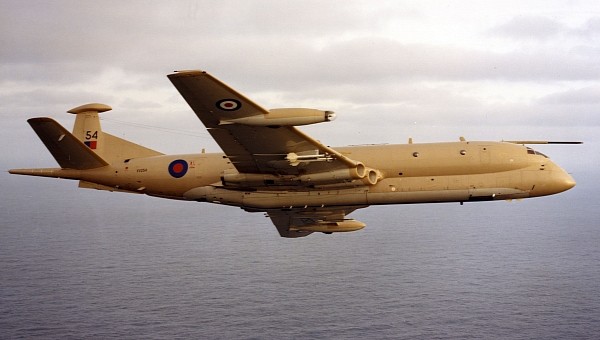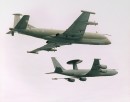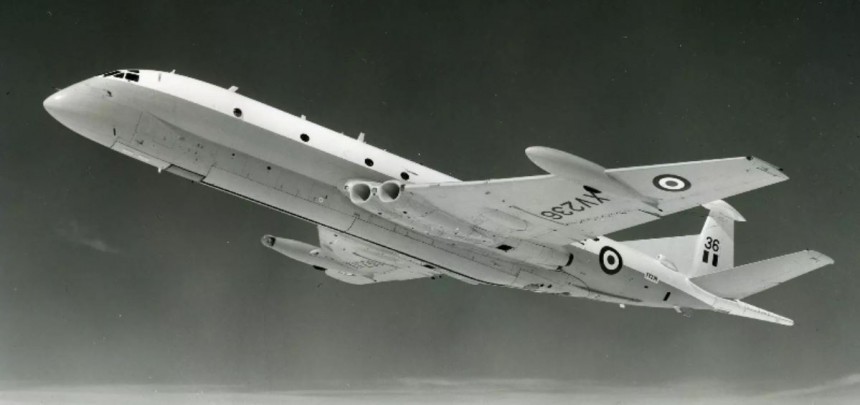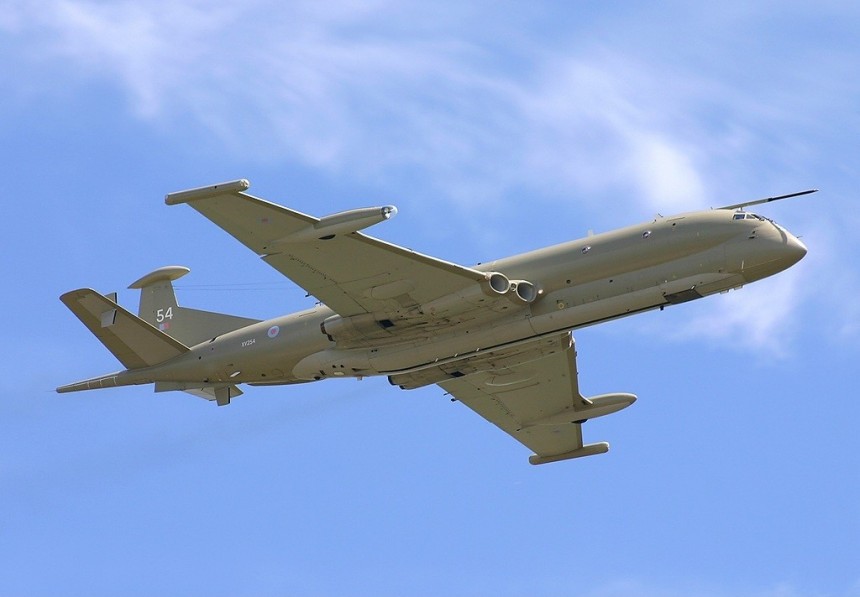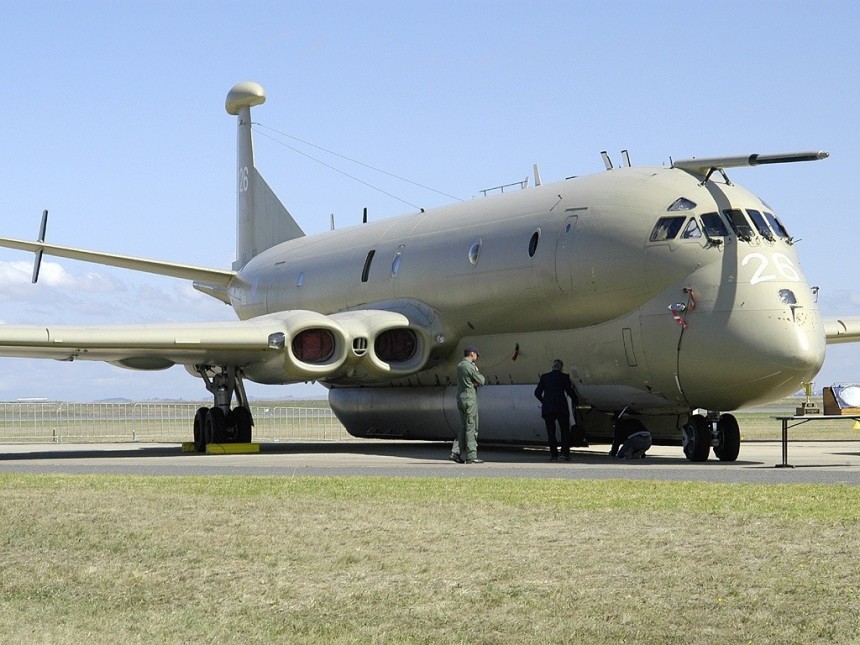If you ask most aviation geeks about the de Havilland Comet, they're bound to conjure images of hideous crashes, explosive decompression, and badly designed windows which led to stress fractures that doomed multiple passenger flights.
Never mind that the whole square vs. round window theory was not the only smoking gun, as many believed. Outside of the handful of admittedly tragic and preventable accidents at the hands of Comet 1, the British Military also flew an upgraded version with distinction.
Based on all the negative publicity the de Havilland Comet 1 receives to this very day, you'd think the British would be keen to try and erase the jet from history. But in fact, the opposite was the case. In response to finding that the Comet 1's outer skin could rupture after continuous takeoffs and landings, work began on redesigns that would one day bear the RAF the Nimrod.
Items like a thicker outer skin, redesigned exterior windows, and replacing the Comet 1's relatively inefficient Halford Ghost turbojet engines for four Rolls-Royce Avons were just the highlights of items changed in an attempt to remediate the image of the airliner before Boeing and the Americans could usurp it.
In the end, the ultimate evolution of the Comet airliner, the Comet 4, had a remarkably less dramatic service history than the Comet 1. But sadly, the American Douglas DC-8 and the Boeing 707 did all the things the Comet 4 could do, just faster, more efficiently, and without the media baggage. This meant, if not for a Royal Air Force request for a new maritime patrol aircraft in the early 60s, the Comet family would have faded away for good.
The two final civilian Comet 4C airframes manufactured would become the basis for a project de Havilland's successor company Hawker Siddeley initially called the Maritime Comet, or Type HS 801. Work on the design began at a place that hallowed ground for British av-geeks. That being the Woodford Aerodrome in Woodford, Greater Manchester, U.K.
In the same building that spawned the Avro Lancaster, Lincoln, Tudor, Vulcan, and Shackelton, the Maritime Comet shed its civilian skin and ditched its Avon turbojets for even more efficient Rolls-Royce Spey turbofan engines. The extra fuel efficiency could be the difference between life and death at the low altitudes these aircraft tend to fly at.
The first Nimrod MR1 took to the air on May 23rd, 1967. A production order for 46 airframes was placed at this time, with the first examples entering service in October 1969. Resist the urge to chuckle at the Nimrod's silly name. It's only in antiquated North American English that the word connotates a dull or dim-witted person.
If you think the standard Nimrod looks wacky, the bespoke airborne early-warning (AEW) variant with its bulging radar looks even stranger. Along with all the new avionics hardware, an internal bomb bay is perhaps the most notable feature of the Nimrod.
Under-wing pylons on which bombs or missiles could be mounted meant the Nimrod could be armed to the teeth, especially for a lowly patrol aircraft. The Nimrod's dedicated anti-submarine variant, the R1, has all this equipment optimized for its very specific but critically vital role.
By the mid-1970s, the Nimrod MR2 upgrade path was ready for implementation. Thirty-five airframes were selected for this upgrade package, including provisions for in-flight refueling as well as provisions for more weapons.
For over 40 years, the Nimrod in all its forms followed the RAF wherever it went around the globe. Be it the Falklands, Operation Desert Storm, the War on Terror, and even civilian search and rescue operations closer to friendly soil, the Nimrod served far more admirably than its mildly offensive given name would make it sound like.
To think the Nimrod is genetically linked to perhaps the most controversial airliner ever to see service is just another one of those classic British comeback stories. But alas, the good times couldn't roll on forever. The last of the Hawker Siddeley Nimrods in service with the Royal Air Force were retired by the summer of 2011 in favor of new American jets.
As a fitting silver lining for how awful Comet 1's reputation once was, the Nimrod served phenomenally well. It'd be inaccurate to say that Nimrod's accident record was flawless. One accident killed 14 crew on board in 2006 when a fire after an in-flight refueling caused the aircraft to crash in Kandahar, Afghanistan, during a reconnaissance flight. But compared to its very earliest ancestor, the Nimrod's reputation far exceeds its forbearers.
So, as the Britts rely more and more on American hardware these days, take solace in knowing it wasn't always this way. Back in the day, Great Britain used to manufacture some pretty awesome airframes. The Nimrod is proof-positive of this.
A civilian disaster becomes a military triumph
But not in its standard airliner form, of course. This is the story of the Hawker Siddeley Nimrod, a maritime patrol aircraft that wasn't afraid to moonlight as a bomber, a torpedo plane, or anything else the RAF desired.Based on all the negative publicity the de Havilland Comet 1 receives to this very day, you'd think the British would be keen to try and erase the jet from history. But in fact, the opposite was the case. In response to finding that the Comet 1's outer skin could rupture after continuous takeoffs and landings, work began on redesigns that would one day bear the RAF the Nimrod.
Items like a thicker outer skin, redesigned exterior windows, and replacing the Comet 1's relatively inefficient Halford Ghost turbojet engines for four Rolls-Royce Avons were just the highlights of items changed in an attempt to remediate the image of the airliner before Boeing and the Americans could usurp it.
The two final civilian Comet 4C airframes manufactured would become the basis for a project de Havilland's successor company Hawker Siddeley initially called the Maritime Comet, or Type HS 801. Work on the design began at a place that hallowed ground for British av-geeks. That being the Woodford Aerodrome in Woodford, Greater Manchester, U.K.
In the same building that spawned the Avro Lancaster, Lincoln, Tudor, Vulcan, and Shackelton, the Maritime Comet shed its civilian skin and ditched its Avon turbojets for even more efficient Rolls-Royce Spey turbofan engines. The extra fuel efficiency could be the difference between life and death at the low altitudes these aircraft tend to fly at.
The first Nimrod MR1 took to the air on May 23rd, 1967. A production order for 46 airframes was placed at this time, with the first examples entering service in October 1969. Resist the urge to chuckle at the Nimrod's silly name. It's only in antiquated North American English that the word connotates a dull or dim-witted person.
A bizarre-looking airplane with a purpose
Somehow, the Hawker Siddeley Nimrod does manage to look dopey or Dumbo-adjacent when looking at it from the front. The reason for this appearance is a nose section bursting at the seams with electronic warfare sensors, a magnetic anomaly detector used to sniff out enemy submarines, and an ASV Mk 21 radar also used by the Avro Shackelton the Nimrod was meant to replace.If you think the standard Nimrod looks wacky, the bespoke airborne early-warning (AEW) variant with its bulging radar looks even stranger. Along with all the new avionics hardware, an internal bomb bay is perhaps the most notable feature of the Nimrod.
Under-wing pylons on which bombs or missiles could be mounted meant the Nimrod could be armed to the teeth, especially for a lowly patrol aircraft. The Nimrod's dedicated anti-submarine variant, the R1, has all this equipment optimized for its very specific but critically vital role.
By the mid-1970s, the Nimrod MR2 upgrade path was ready for implementation. Thirty-five airframes were selected for this upgrade package, including provisions for in-flight refueling as well as provisions for more weapons.
An underappreciated all-time great British jet
Amazingly, Nimrods even carried AIM-9 Sidewinder air-to-air missiles during the Falklands War. The prospect of a lumbering ex-airliner achieving an air-to-air kill warms our hearts. Although, no records indicate a shoot-down of this nature ever took place.For over 40 years, the Nimrod in all its forms followed the RAF wherever it went around the globe. Be it the Falklands, Operation Desert Storm, the War on Terror, and even civilian search and rescue operations closer to friendly soil, the Nimrod served far more admirably than its mildly offensive given name would make it sound like.
To think the Nimrod is genetically linked to perhaps the most controversial airliner ever to see service is just another one of those classic British comeback stories. But alas, the good times couldn't roll on forever. The last of the Hawker Siddeley Nimrods in service with the Royal Air Force were retired by the summer of 2011 in favor of new American jets.
As a fitting silver lining for how awful Comet 1's reputation once was, the Nimrod served phenomenally well. It'd be inaccurate to say that Nimrod's accident record was flawless. One accident killed 14 crew on board in 2006 when a fire after an in-flight refueling caused the aircraft to crash in Kandahar, Afghanistan, during a reconnaissance flight. But compared to its very earliest ancestor, the Nimrod's reputation far exceeds its forbearers.
